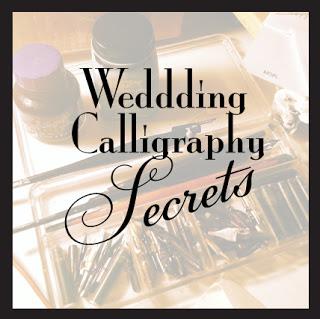
Have you ever wondered about what happens to your envelopes, place cards and/or other paper once it leaves your care and into the hands of your calligrapher? When CT-Designs secures your materials, they are trotted off to the calligraphy studio! I have been wanting to do this post for the longest time... The wedding off-season seems to be the best time since I get so bogged down in the summer(s).
Go with me today while I pull back the curtain and reveal what happens to make your materials so beautiful!
1. Nib Selection (Pointed Pen)I do a lot of copperplate type lettering which requires a variety of pointed pen "nibs" or "tips". Based on the type of paper that is being written on, there is a process of nib selection that occurs upon initial review. The tips differ in how much ink is released based on the amount of pressure you add while creating the strokes.
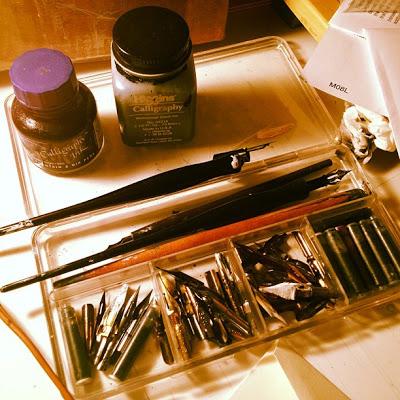
Photo of "nibs" and nib holders in a clear acrylic case
2. Guideline Selection
As long as your envelopes and place cards are unlined (translucent), I go through dozens of guides to see which one fits your work and is appropriate to the address' size/layout.
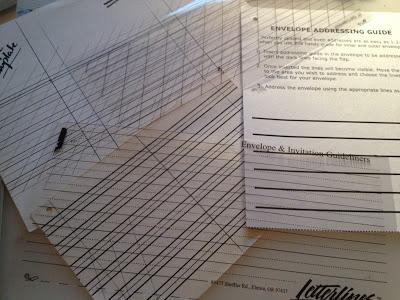
I've created dozens of these myself, but have recently discovered that you can buy them.!
2. LightboxThe guidelines are used in conjunction with a light box. A light box is a must have for your calligrapher. This will ensure that lines remain as straight as possible without guidelines having to be drawn (and subsequently erased) on your envelopes or other surfaces.
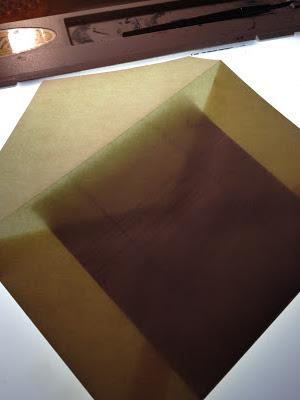
If you look closely you can see the guidelines peeking through the envelope.
3. Die-Cut Guideline Option
For envelopes that are lined, opaque or colored, I have custom guidelines that I use to maintain the integrity of layout. Definitely more difficult to do, and it takes longer. This is why these kinds of envelopes carry one-time surcharges.
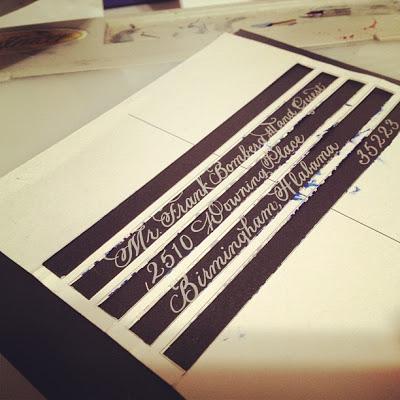
After the addresses are written, I have to go BACK in and add flourishes and descenders and tails (i.e. g's, y's, p's... etc.)
4. Magnifying Tool
Magnifiers separate serious calligraphers from the average. There is no way, in my opinion, to craft letters that are of the same look and consistent shape and volume throughout a layout without using one. The naked eye is unable to do it.
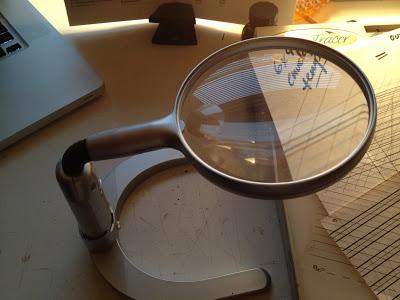
I have a mobile magnifier for larger layouts when I have to move it around
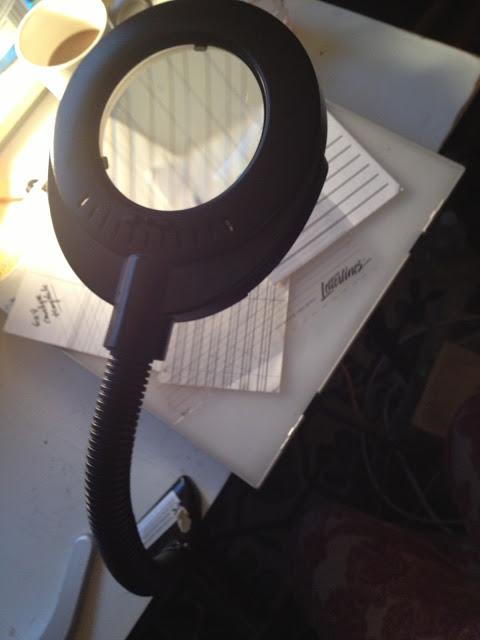
Then there is the clamped, goose necked style magnifier for envelopes and smaller work
5. Drying Station
I re-purpose file folder racks as "drying stations" for envelopes. Depending on the kind of ink that is used and the surface of the envelope/paper, drying times will vary. I usually wait forever to switch these out, just to be safe. Last thing you want is a smear after working this hard on an address!

Let me know if you have any more questions about this process!
Also check out our custom Etsy listings that feature sample kits for purchase!
Deluxe Sample KitSimpler Style Sample Kit
Thanks guys!--ct

